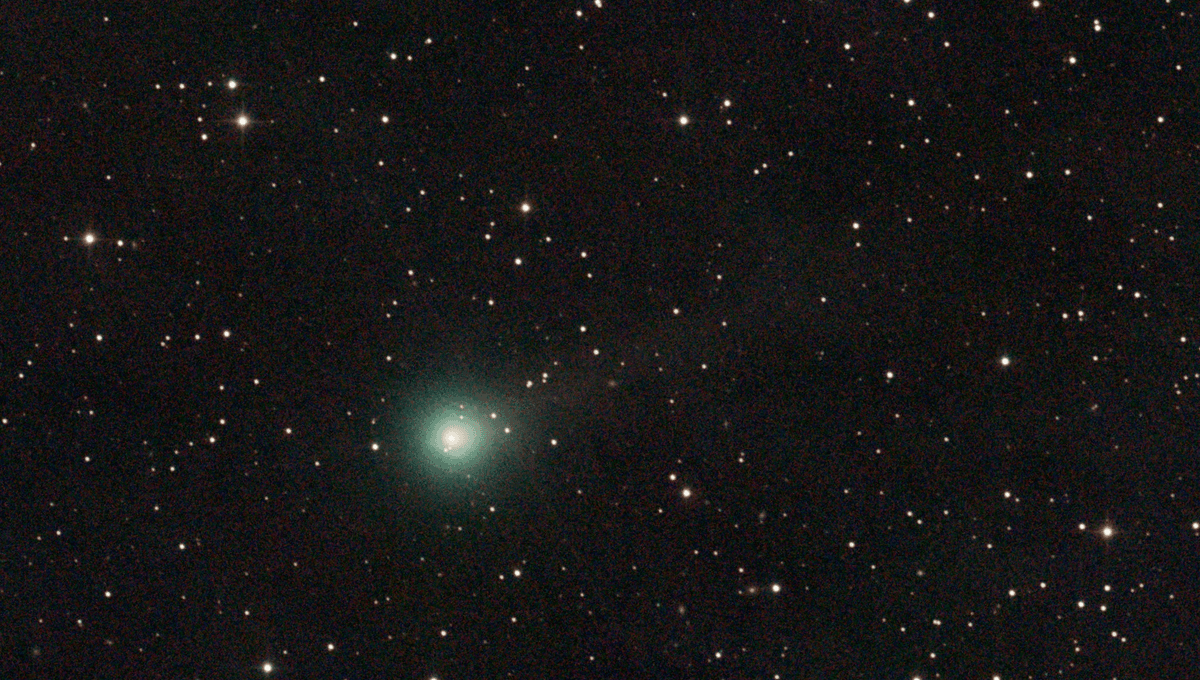
If you have binoculars and dark skies, right now you might be able to catch two comets. Better still, one is brightening enough that it may be visible to the naked eye within a few weeks. The history of comet watching offers plenty of warnings, but there are also reasons for optimism. At the same time, those binoculars could come in useful for spotting yet another comet, whose peak brightness will occur around the same time.
We’ve known about Comet 2025/A6 (Lemmon) since January 3, but for most of that time it’s just been one more moving dot visible only to professional sized telescopes. Since mid-August it has been brightening dramatically; it’s already about six times brighter than initial estimates for its peak. Since the best time to see it is probably not until mid-October, that leaves plenty of opportunity for it to turn into something millions of people will get to enjoy.
When a new comet is discovered, there are often headlines about how the last time it visited the inner Solar System Neanderthals were still around. Sometimes the orbit is even longer. However, A6 (Lemmon)’s last visit was during the Middle Ages, and it’s possible some monk or court astronomer made a note no one has found. Telescopes picked it up in November last year, but these images were only noticed after the Mount Lemmon Survey reported it and its orbit was tracked backwards.
A6 Lemmon’s closest approach to the Sun will not occur until November 8. During July it was on the other side of the Sun from us, and therefore invisible. When it emerged, it was considerably brighter than anyone expected, and the improvement has continued, reaching magnitude 8.5 now.
Projecting that increase forwards has led to estimates that A6 Lemmon will be magnitude 3.9 on closest approach to Earth on October 21. That’s easily visible under dark skies.
Nevertheless, there have been many comets in recent years that were brighter than this, sometimes more than a hundred times brighter, and were still almost impossible to spot. That’s because their brightness peaked when they were very close to the Sun, both in reality and from our perspective. By the time they had moved enough to be visible after astronomical twilight, they had faded enough to need instruments to see, and often lost their tails as well.
A6 Lemmon has some advantages over these. On October 21 it will be 42 degrees from the Sun from our perspective. Consequently, it will be visible in the western sky an hour after sunset. It’ll be low at that time, but not absurdly so, particularly for people in the Northern Hemisphere. Moreover, the fourth brightest star, Arcturus, will be close enough in the sky to act as a guide, with respectably bright Izar (Epsilon Bootis) an even closer marker.
The best time to view A6 Lemmon might be a few days before closest approach, when it will be almost as bright, and even higher in the sky after sunset.
Right now A6 Lemmon is being overshadowed by a comet with a much more impressive tail, but that could change.
All comet observing stories need to come with the warning about how often predecessors have failed to live up to expectations. There are two reasons for this. One is that many comets break apart on passage close to the Sun, leaving them disappointing by the time they’re better positioned. The other reason is that comets can often undergo brief outbursts, where cryovolcanoes on their surface release a puff of gas and dust, leading to brightening that cannot be sustained.
Either of these could prove true for A6 Lemmon, but they’re not as likely as usual. Firstly, closest approach to Earth will occur before the comet reaches its nearest point to the Sun. Comets can still break up at this distance, but it’s a great deal less common than when sungrazing. The dramatic brightening through August was initially written off as a temporary outburst, but has been sustained long enough that this looks less likely.
Nevertheless, estimates of peak brightness vary, and there’s still a real chance of disappointment.
Meanwhile, how could we write a story about comets in October and not mention 3I (ATLAS), only the third interstellar comet ever detected. There’s no chance this visitor from the stars will reach naked eye visibility; even backyard telescopes will struggle to pick it up. Although it will make its closest approach to the Sun on October 29, those with the capacity will have a better chance of spotting it in November when it will be moving into darker skies. The confusingly similarly named K1 (ATLAS), on the other hand, will be a binocular object in late October.
As for the other current binocular comet, that’s R2 (SWAN), which managed to make its way from the outer Solar System to near the Sun without anyone spotting it.
It was noted by sharp-eyed amateur astronomers Vladimir Bezugly and Michael Mattiazzo in images taken of the Sun by the SWAN instrument on SOHO. It’s currently considerably brighter than A6 Lemmon, and there are spectacular photographs of its tail stretching past Spica, but there’s debate as to whether it will get any brighter. It is slowly putting more distance between itself and the Sun from our perspective, however, making it easier to see, and will pass a degree from Mars this weekend.
Source Link: C/2025 A6 (Lemmon) Closest Earth Approach Is Next Month – Will We See It With The Naked Eye?